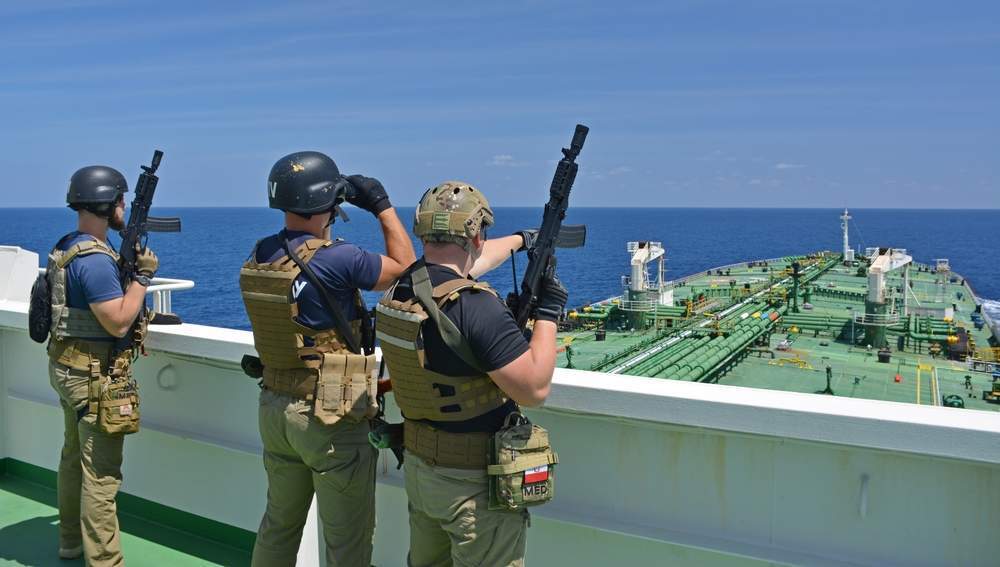
Somali pirates have hijacked an Indian cargo ship, in the second attack after a two year hiatus.
The latest attack follows one by Somali pirates on a tanker vessel travelling to Mogadishu from Djibouti some two weeks ago, which rocked the maritime industry.
Do these two instances, in rapid succession, show that the piracy threat is as real as ever?
On 13 March, Somali pirates hijacked the MT ARIS 13, a tanker vessel en route to Mogadishu from Djibouti.
The ship, which consisted of a crew of eight Sri Lankans, was seized approximately 18km off northern Somalia – the first such hijacking since 2012, around the height of Somali piracy.
A day later, a ransom demand was made. However, later that week, just four days after the pirates struck, the ship was released, without a ransom being paid.
Reports claim the pirates learned that Somali businessmen had hired the ARIS 13. “After we came to know that the Somali traders hired the oil tanker, we released it without a ransom,” Reuters reported one of the pirates as saying.
The Sri Lankan foreign ministry also added in a statement that the crew was released “unharmed, without the payment of a ransom”. If there’s such a thing as best-case scenario following a hijacking, this is probably it.
Crew safe, ship released. However, it serves as a stark reminder that Somali piracy, while severely weakened since its heyday, is still a very real threat.
Ben Lawellin is the project manager for the Horn of Africa with the Oceans Beyond Piracy (OBP) group. He believes that the ARIS 13 attack demonstrates that pirates still have the capability, opportunity and intent to conduct piracy.
However, he adds: “The quick resolution of the incident indicates that pirates cannot operate with the same impunity as in the past. Local Somali law enforcement like the Puntland Maritime Police Force have demonstrated that they can act quickly and decisively to counter pirate activity.”
Nevertheless, on the 24th March, just days after the ARIS 13 incident, pirates struck again, seizing control of a Somali fishing boat. At the time of writing, reports suggest it could be used as a mothership for further hijacking attempts.
But what do the statistics say? Well, to be truthful, it’s good and bad news.
Kidnappings on the rise in 2016
Let’s start with the bad.
The International Chamber Of Commerce’s International Maritime Bureau (IMB) was set up in 1981 to act as a “focal point” in the fight against all types of maritime crime.
In 1992, the IMB developed the Piracy Reporting Centre, a dedicated, 24-hour service that allows shipmasters to report any incident of piracy or armed robbery.
The IMB’s most recent annual report shows that in 2016, more crew members were kidnapped at sea than in any of the previous ten years, with a “threefold increase” on 2015.
The report states: “Pirates kidnapped 62 people for ransom in 15 separate incidents in 2016. Just over half were captured off West Africa, while 28 were kidnapped from tugs, barges, fishing boats, and more recently merchant ships, around Malaysia and Indonesia.”
“A lot of the kidnappings we saw in 2016 were incidents that occurred in and around the Sulu Sea [between eastern Malaysia and the Philippines] and Celebes Sea,” explains Cyrus Mody, assistant director at the IMB.
“Earlier in the year, we saw tugs and barges being targeted and crews taken hostage. But then we also started seeing smaller cargo vessels being boarded. These are very congested waters, narrow, and [have] a lot of local traffic.”
This traffic creates opportunities; opportunities that are being exploited for financial gain, according to Gerry Northwood, chief operating officer at the Maritime Asset Security and Training (MAST) organisation.
Pirates kidnapped 62 people for ransom in 2016
He explains: “Some have realised that if you do it, you will get paid. That’s not for a minute to advocate that we should not pay the ransoms, but we are in a situation where criminal gangs are able to orchestrate an income from kidnap and ransom.
It’s not just a question of kidnapping Westerners, either. It’s a business model that works for them, and while it works, we’re going to have problems.”
The tragic consequences – and the barbarity of some gangs involved – of hostage taking were shown earlier this year. Jurgen Kantner, 70, was a German national, held hostage by Abu Sayyaf, a terrorist group with links to ISIS, for three months after being kidnapped from his yacht in November last year.
Abu Sayyaf beheaded Mr Kantner in February, after a deadline for a 30 million peso (£483,000; $600,000) ransom expired.
Reports claim that Mr Kantner and his companion Sabine Merz, who was shot dead on the yacht, had been sailing off Malaysia’s Sabah state when the group attacked.
Of course, not all kidnappings end in such brutal circumstances.
Ransoms are paid, people are freed. However, according to the OBP, since 2000, almost 5,000 seafarers have been taken hostage by Somali pirates. In 2010, OBP says there were over 1,000 seafarers being held hostage at the same time in Somalia.
So, are we seeing the emergence of a new kidnapping trend? “It’s definitely a possibility, but the likelihood of Somali piracy returning in the same manner as years past is low,” says Lawellin.
Global piracy declining
The other side of the IMB report makes clear that piracy – despite the kidnapping increase – is in fact decreasing. It has, the group says, reached its lowest levels since 1998. In total, IMB received 191 reported incidents of piracy and armed robbery in 2016, down from 246 the previous year.
“There are a few reasons why we’ve seen the decline,” says Mody. “Obviously Somali piracy was, from 2007 to 2012…we had a lot of problems there and things taking place. That has come under control and is being monitored by EU navies.
“Also, in Southeast Asia we used to see a lot of attacks in Indonesian ports. Many of these were low-level, opportunistic threats, where robbers would come on board, take whatever they could, and leave.
However, in 2013 the Indonesian marine police, in collaboration with us, identified 11 areas of concerns, and they deployed patrol vessels in those areas. Year on year, we have seen a decline.”
The decline is testament to the anti-piracy efforts put in place, including EU NAVFOR, with EU and other navies patrolling areas of high risk; armed security onboard ships; improved communication and awareness between ships; the reporting mechanisms in place and re-routing of ships away from dangerous areas; as well as efforts on land to prevent piracy at its source, building up the necessary institutions and rule of law to prevent impressionable minds from following the commands of organised crime kingpins.
On the other hand, at end of last year NATO decided to end its counter-piracy mission, Operation Ocean Shield – which operated off the Horn of Africa – after nearly eight years of service.
It remains to be seen what long-term effects this will have, and if pirates will take it as a sign that the international community is drawing down its commitment to anti-piracy patrols.
The question being, is the decline in Somali piracy due to the deterrent that such patrols send out? If so, does the withdrawal of a portion of that deterrent embolden pirates to strike with greater frequency?
We can’t say it’s a crime that has been defeated.
For now, and compared to just a few short years go, “we’re in a much better place”, says Northwood, a former commander of the UK Counter-Piracy Task Group. “Ship owners were almost completely unprepared for a situation like the one in Somalia.
That has made everyone think very carefully. In general, people are better equipped to deal with the problem and adapt to an evolving situation.”
However, Northwood cautions against entering areas such as the Sulu Sea; “if you don’t need to go through it, don’t.” The Gulf of Aden, he continues, is still a treacherous place. “Even though it’s been the place that has been best protected against Somali piracy, it’s still the area where you are most likely to find a pirate. You need to be watchful.”
The Institute for Security Studies, an African non-profit organisation, also highlights a growing threat in the Gulf of Guinea, with more acts of piracy being reported.
As for the Horn of Africa: “Right now, this incident [the ARIS 13] is the first of its kind in five years. It’s one point in determining the threat or a possible trend,” explains Lawellin.
Whether this is just a one-off incident or the sign of a trend that will continue, is still unclear right now. It’s too early to say.”
An end to piracy?
The fact is, while piracy is not the epidemic it once was, “we can’t say it’s a crime that has been defeated”, says Mody. “That’s never going to happen.”
There’s consensus on this. A majority, if not all, of security and maritime experts admit to the improvements made, from the days when Somali pirates hijacked vessels at will and reaped the rewards through ransom payments, to now, where the pendulum has, to a certain degree, swung the other way.
However, Northwood is keen to stress the need for continued vigilance. He warns “there’s no room for complacency”, adding: “It doesn’t mean that there’s not a threat; West African piracy could see a resurgence.”
As demonstrated by the IMB in regards to statistics on kidnappings and the most recent attacks, there are still those who view the oceans, and the vessels that sail through them, as theirs to plunder.
This article originally appeared on Ship Technology. You can read the original here.







